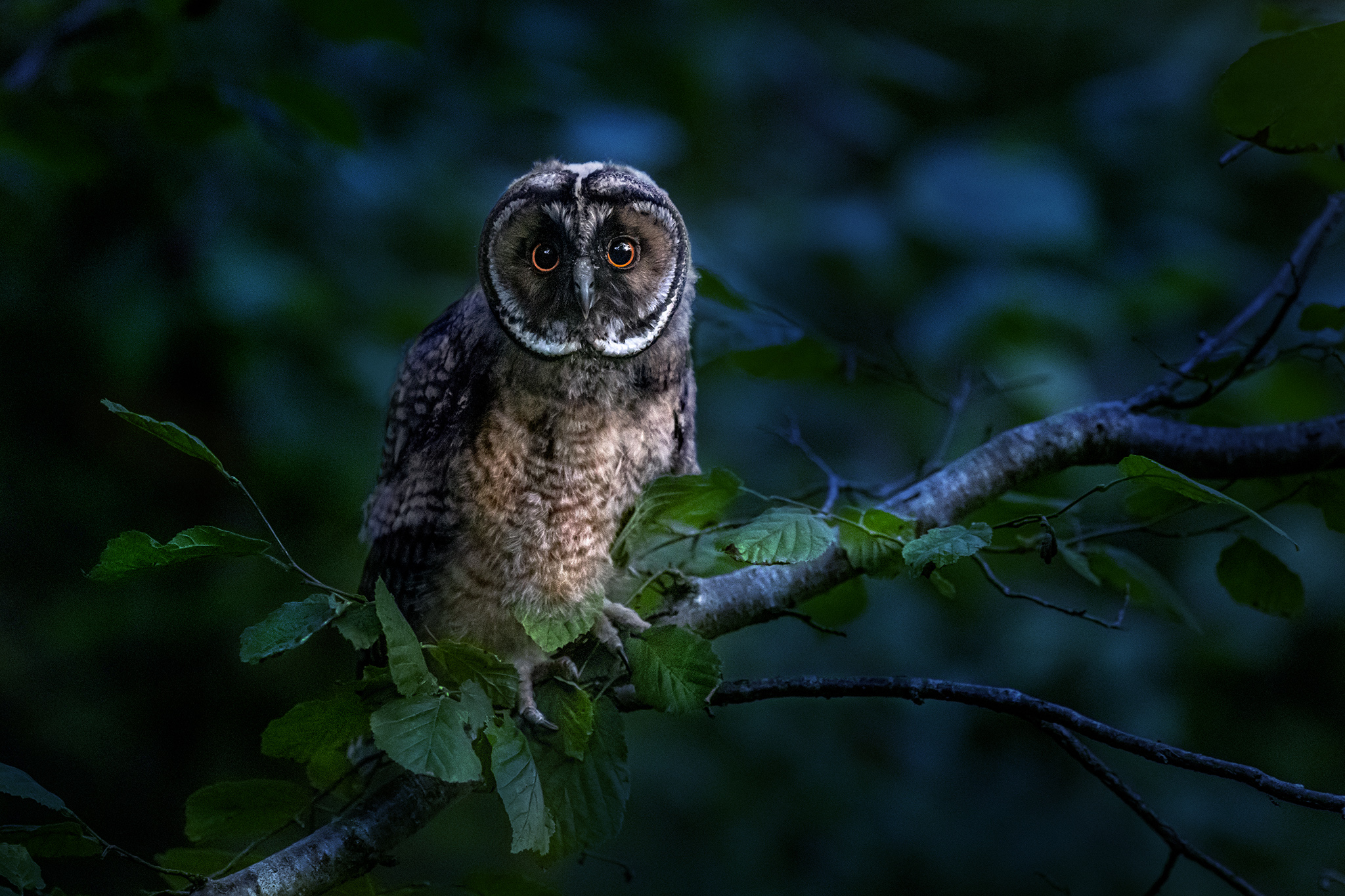Here’s a full overview of the Long-eared Owl (Asio otus), one of Europe’s most widespread and fascinating nocturnal raptors — known for its tall ear tufts and haunting call.
🦉 Long-eared Owl (Asio otus)
Taxonomy
- Kingdom: Animalia
- Phylum: Chordata
- Class: Aves
- Order: Strigiformes
- Family: Strigidae (Typical owls)
- Genus: Asio
- Species: A. otus
General Description
The Long-eared Owl is a medium-sized owl with striking facial features and distinctive long ear tufts that give the species its name. These “ears” are actually feather tufts, not ears, and are used for camouflage and communication rather than hearing.
- Length: 31–40 cm
- Wingspan: 86–100 cm
- Weight: 200–435 g
- Plumage: Mottled brown, gray, and buff with darker streaks for superb camouflage among tree branches.
- Facial disc: Orange to buff-colored with bold dark borders.
- Eyes: Deep orange to yellow.
- Ear tufts: Long and erect when alert, flattened when resting or alarmed.
Distribution
Asio otus is widely distributed across:
- Europe (from the British Isles to Russia)
- Asia (to Japan and China)
- North America
- North Africa
It is among the most widespread owl species in the Northern Hemisphere, adapting to diverse climates from boreal forests to Mediterranean scrublands.
Habitat
- Prefers open woodlands, forest edges, farmland, and shrubby areas near open fields.
- Commonly roosts in dense coniferous trees, thickets, or hedgerows during the day.
- Uses old nests of corvids (magpies, crows) or squirrels’ dreys for breeding.
Behavior and Ecology
- Activity: Strictly nocturnal—most active after dusk and before dawn.
- Flight: Silent, buoyant, and agile; wings are long and narrow, adapted for stealth.
- Hunting:
- Hunts primarily by sound using exceptional hearing.
- Diet mainly includes small mammals (especially voles, mice, and shrews).
- Occasionally takes small birds or large insects.
- Roosting:
- During winter, forms communal roosts with several individuals in dense trees, often returning to the same sites year after year.
- Daytime roosting posture is tall and slender to blend in with branches.
Reproduction
- Breeding season: March–June (varies by region).
- Nest: Does not build its own—uses abandoned crow or magpie nests.
- Clutch size: 4–6 white eggs.
- Incubation: ~25–30 days, done mostly by the female.
- Fledging: Young leave the nest after ~3 weeks but may not fly well until 5 weeks old.
- Parental care: Both parents provide food until the young become independent.
Calls and Sounds
- Male’s territorial call: A deep, repeated “hoo… hoo… hoo” at 2–4 second intervals, audible up to 1 km away.
- Alarm call: Harsh barking or screeching notes.
- Juveniles: Produce a high-pitched “squeaky gate” begging call at night.
Conservation Status
- IUCN Red List: 🟢 Least Concern
- Population trend: Stable in many regions, though declining locally due to habitat loss and agricultural intensification.
- Protected under the EU Birds Directive and CITES Appendix II.
Ecological Role
- Plays a vital role in rodent population control, especially in farmland ecosystems.
- Serves as a bioindicator of healthy small-mammal populations.
Identification Tips
- Long, narrow ear tufts set close together.
- Orange facial disc with black outline.
- Orange-yellow eyes with intense gaze.
- Silent flight and slender profile.
- Roosting posture—elongated and upright, blending with tree trunks.
Interesting Facts
- The Long-eared Owl’s “ears” are not used for hearing—its true ears are asymmetrically placed on the skull for pinpoint sound detection.
- In winter, communal roosts can contain up to 20 or more owls.
- Despite its wide range, it remains a shy and secretive bird, often detected only by its call or pellet remains.
Visited 19 times, 6 visit(s) today
Views: 215
Subscribe to the newsletter:
